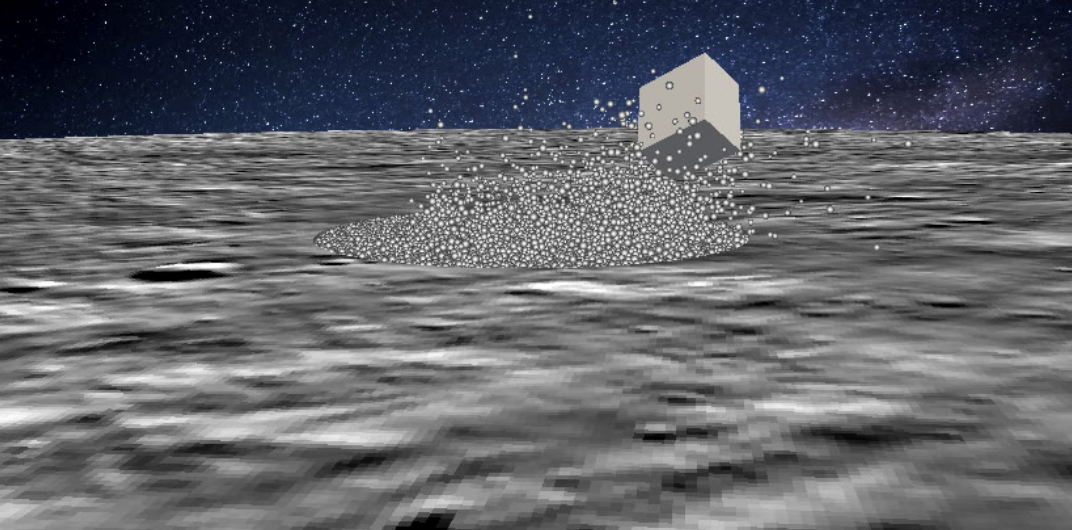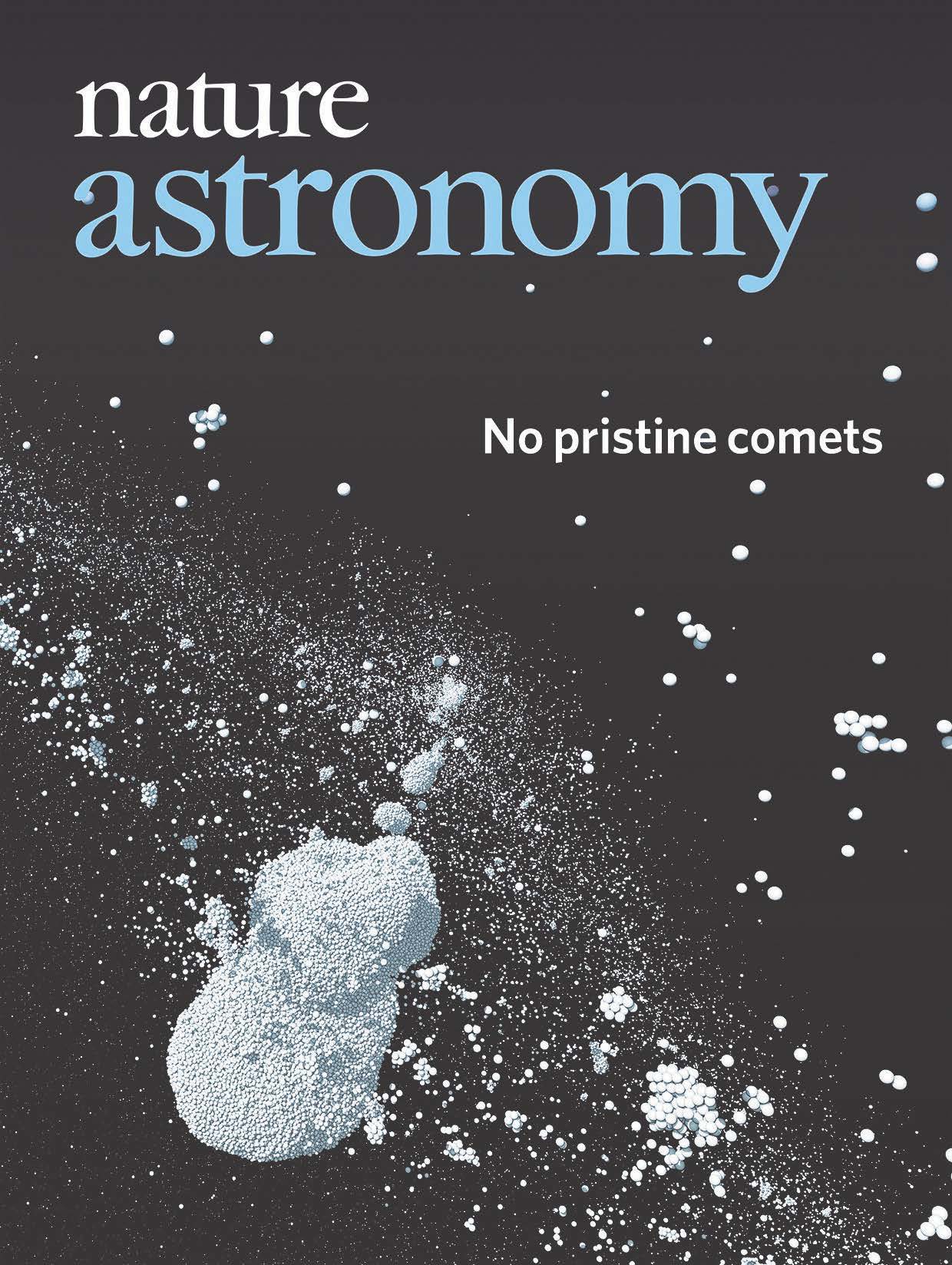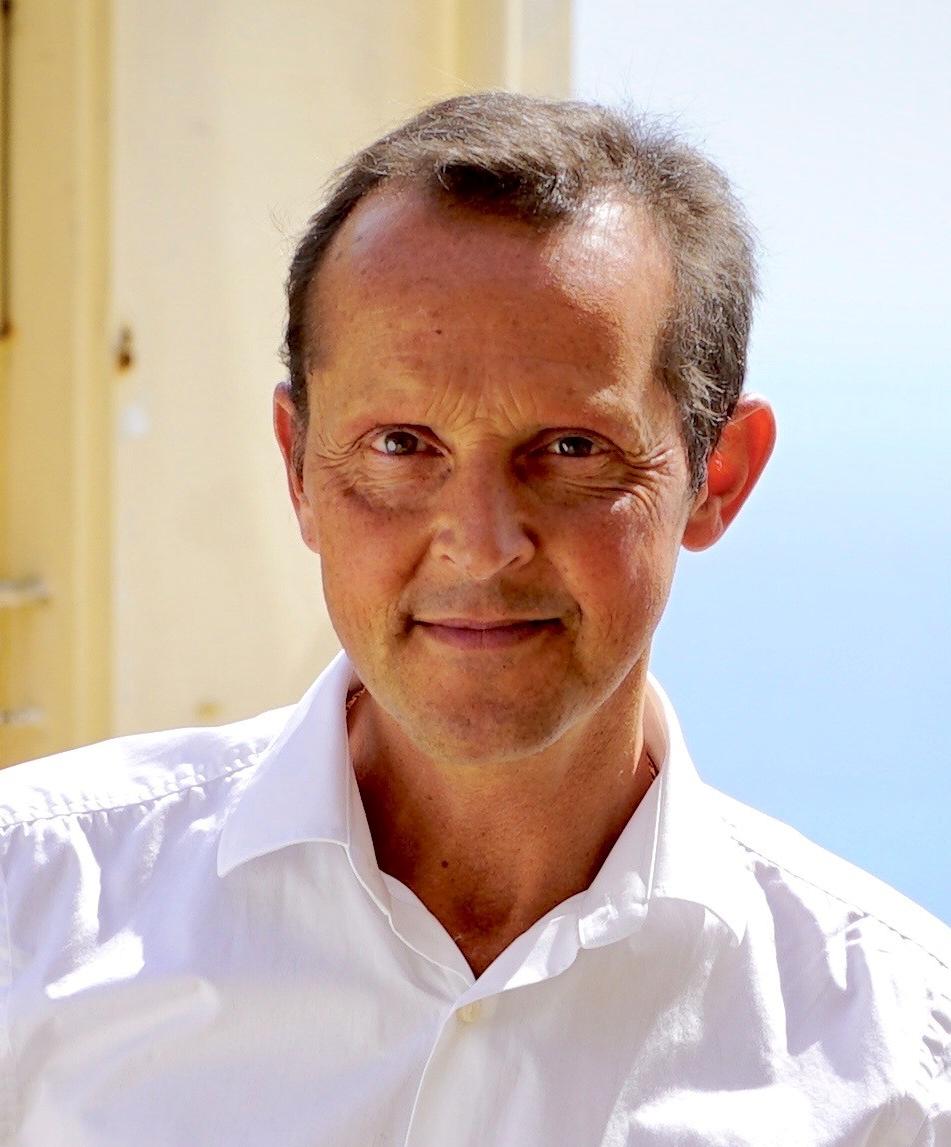Academy of Excellence "Space, Environment, Risk and Resilience"
Granular Material Dynamics and Space Missions to Celestial Bodies: A Transdisciplinary Approach
Analyzing the surface of asteroids to better understand planet formation and emergence of life on Earth

Academy 3 highlight
The GRADYN project gathers astrophysicists and material physicists from Observatoire de la Côte d’Azur and Ecole des Mines ParisTech to study the behavior of granular materials on asteroid surfaces. It contributes to asteroid space missions in which project members are highly involved.
The project
Hayabusa2 (JAXA) and OSIRIS-REx (NASA) are space missions currently visiting two small carbon-rich asteroids for the first time. They will return to Earth with samples in 2020 and 2023, respectively, allowing the international community to make a big step in the understanding of the role of asteroids in planet formation and in the emergence of life on Earth. Our team and project contribute to important activities related to these space missions.
Small asteroid surfaces are usually covered with a layer of granular material called regolith. Regolith properties and behavior in the low-gravity conditions of a small asteroid are poorly understood. Our project combines the expertise of research teams from Observatoire de la Côte d’Azur and Ecole des Mines ParisTech to study the behavior of granular materials in conditions approaching those of asteroids and comets. It relies on different modeling approaches and their validation by comparing computer simulations with laboratory experiments. We address various important issues related to the formation and evolution of asteroids, the modeling of interactions between space instruments (lander, sampling instruments, rovers, etc.) and asteroid surface, and the characteristics of the surface.
The GRADYN project has thus contributed to space mission activities (design, and data interpretation) and to improved knowledge of small asteroid bodies, both of which are a prerequisite to decipher planet formation and emergence of life on Earth.

The +
The project brings together astrophysicists and material physicists. It allows UCA to contribute greatly to on-going and future space missions, in the framework of intensive international collaborations with American, Japanese and European organizations. These results have been published in high impact scientific journals such as Science, Nature Astronomy and Nature Geoscience.
What’s next?
We will combine our discrete and continuum approaches to improve the modelling of granular materials on asteroids in order to understand their surface history. This should pave the way for improved rover wheel design on the Martian moon Phobos that will be visited by the JAXA MMX mission.
Project information
|
Scientific domain
Planetary Science Theme
Space, Risks |
Key words
Granular Materials,
asteroids, space missions, numerical modeling, low-gravity environments |
|
Total budget
47.8 k€ including:
10 k€ from Académie 3 37.8 k€ from Académie 2 |
Students inolved
THUILLET Florian
SUNDAY Cecily |
| Partner laboratories
Ecole des Mines ParisTech
International collaborations NASA (US)
JAXA (Japan) ESA (Europe) DLR (Germany) University of Maryland (US) University of Tokyo (Japan) University of Arizona (US) |
Project members
MICHEL Patrick
THUILLET Florian VALETTE Rudy HACHEM Elie SARDO Lucas |
Project valorization
Publications:
- Schwartz, S.R., Michel, P., Jutzi, M. et al. Catastrophic disruptions as the origin of bilobate comets. Nat Astron 2, 379–382 (2018). https://doi.org/10.1038/s41550-018-0395-2
- Maurel Clara, Patrick Michel, J. Michael Owen, Richard P. Binzel, Megan Bruck-Syal, G. Libourel. Simulations of high-velocity impacts on metal in preparation for the Psyche mission. Icarus, Volume 338, 2020, 113505, ISSN 0019-1035, https://doi.org/10.1016/j.icarus.2019.113505
- Zhang Yun, Derek Richardson, Olivier Barnouin, Patrick Michel, Stephen Schwartz, et al.. Rotational Failure of Rubble-pile Bodies: Influences of Shear and Cohesive Strengths. The Astrophysical Journal, American Astronomical Society, 2018, 857 (1), pp.15. ⟨10.3847/1538-4357/aab5b2⟩. ⟨hal-02307439⟩
- Thuillet Florian, Patrick Michel, Clara Maurel, Ronald-Louis Ballouz, Yun Zhang, et al.. Numerical modeling of lander interaction with a low-gravity asteroid regolith surface. Astronomy and Astrophysics - A&A, EDP Sciences, 2018, 615, pp.A41. ⟨10.1051/0004-6361/201832779⟩. ⟨hal-02448796⟩
- Yu Yang, Patrick Michel, Masatoshi Hirabayashi, Stephen R. Schwartz, Yun Zhang, Derek C. Richardson, and Xiaodong Liu. The Dynamical Complexity of Surface Mass Shedding from a Top-shaped Asteroid Near the Critical Spin Limit. 2018. The American Astronomical Society.The Astronomical Journal, Volume 156, Number 2. https://doi.org/10.3847/1538-3881/aaccf7
- Scheeres, D.J., McMahon, J.W., French, A.S. et al. The dynamic geophysical environment of (101955) Bennu based on OSIRIS-REx measurements. Nat Astron 3, 352–361 (2019). https://doi.org/10.1038/s41550-019-0721-3
- Walsh K., E. Jawin, R.-L. Ballouz, O. Barnouin, E. Bierhaus, et al.. Craters, boulders and regolith of (101955) Bennu indicative of an old and dynamic surface. Nature Geoscience, Nature Publishing Group, 2019, ⟨10.1038/s41561-019-0326-6⟩. ⟨hal-02381710⟩
- Barnouin O., M. Daly, E. Palmer, R. Gaskell, J. Weirich, et al.. Shape of (101955) Bennu indicative of a rubble pile with internal stiffness. Nature Geoscience, Nature Publishing Group, 2019, ⟨10.1038/s41561-019-0330-x⟩. ⟨hal-02381693⟩
- Dellagiustina D., J. Emery, D. Golish, B. Rozitis, C. Bennett, et al.. Properties of rubble-pile asteroid (101955) Bennu from OSIRIS-REx imaging and thermal analysis. Nature Astronomy, Nature Publishing Group, 2019, ⟨10.1038/s41550-019-0731-1⟩. ⟨hal-02381704⟩
- Sugita S., R. Honda, T. Morota, S. Kameda, H. Sawada, et al.. The geomorphology, color, and thermal properties of Ryugu: Implications for parent-body processes. Science, American Association for the Advancement of Science, 2019, pp.eaaw0422. ⟨10.1126/science.aaw0422⟩. ⟨hal-02407829⟩
- Hirabayashi Masatoshi, Eri Tatsumi, Hideaki Miyamoto, Goro Komatsu, Seiji Sugita, et al.. The Western Bulge of 162173 Ryugu Formed as a Result of a Rotationally Driven Deformation Process. The Astrophysical journal letters, Bristol : IOP Publishing, 2019, 874 (1), pp.L10. ⟨10.3847/2041-8213/ab0e8b⟩. ⟨hal-02381811⟩
- M. Grott, J. Knollenberg, M. Hamm, K. Ogawa, R. Jaumann, et al.. Low thermal conductivity boulder with high porosity identified on C-type asteroid (162173) Ryugu. Nature Astronomy, Nature Publishing Group, 2019, 3 (11), pp.971-976. ⟨10.1038/s41550-019-0832-x⟩. ⟨hal-02381807⟩
- Maurel Clara, Patrick Michel, J. Michael Owen, Richard P. Binzel, Megan Bruck-Syal, G. Libourel. Simulations of high-velocity impacts on metal in preparation for the Psyche mission. Icarus, Volume 338, 2020, 113505, ISSN 0019-1035, https://doi.org/10.1016/j.icarus.2019.113505.
- Thuillet Florian, Patrick Michel, Shogo Tachibana, Ronald-L Ballouz, Stephen Schwartz. Numerical modelling of medium-speed impacts on a granular surface in a low-gravity environment application to Hayabusa2 sampling mechanism. Monthly Notices of the Royal Astronomical Society, Oxford University Press (OUP): Policy P - Oxford Open Option A, 2020, 491 (1), pp.153-177. ⟨10.1093/mnras/stz3010⟩. ⟨hal-02407791⟩
- Lauretta D., C. Hergenrother, S. Chesley, J. Léonard, J. Pelgrift, et al.. Episodes of particle ejection from the surface of the active asteroid (101955) Bennu. Science, American Association for the Advancement of Science, 2019, 366 (6470), pp.eaay3544. ⟨10.1126/science.aay3544⟩. ⟨hal-02407783⟩
- Morota T, Sugita S, Cho Y, Kanamaru M, Tatsumi E, Sakatani N, Honda R, Hirata N, Kikuchi H, Yamada M, Yokota Y, et al.. Sample collection from asteroid (162173) Ryugu by Hayabusa2: Implications for surface evolution. Science. 2020 May 8;368(6491):654-659. doi: 10.1126/science.aaz6306
- Barucci M., P. Hasselmann, A. Praet, M. Fulchignoni, J. Deshapriya, et al.. OSIRIS-REx spectral analysis of (101955) Bennu by multivariate statistics. Astronomy and Astrophysics - A&A, EDP Sciences, 2020, 637, pp.L4. ⟨10.1051/0004-6361/202038144⟩. ⟨hal-02871198⟩
- E. Tatsumi, C. Sugimoto, L. Riu, S. Sugita, T. Nakamura, et al.. Collisional history of Ryugu’s parent body from bright surface boulders. Nature Astronomy, Nature Publishing Group, 2020, ⟨10.1038/s41550-020-1179-z⟩. ⟨hal-02986187⟩
- Jutzi Martin, Patrick Michel. Collisional heating and compaction of small bodies: Constraints for their origin and evolution. Icarus, Elsevier, 2020, 350, pp.113867. ⟨10.1016/j.icarus.2020.113867⟩. ⟨hal-02986173⟩
- Michel P., R.-L. Ballouz, O. Barnouin, M. Jutzi, K. Walsh, et al.. Collisional formation of top-shaped asteroids and implications for the origins of Ryugu and Bennu. Nature Communications, Nature Publishing Group, 2020, 11 (1), ⟨10.1038/s41467-020-16433-z⟩. ⟨hal-02986180⟩
- Zhang Yun, Patrick Michel. Tidal distortion and disruption of rubble-pile bodies revisited: Soft-sphere discrete element analyses. Astronomy and Astrophysics - A&A, EDP Sciences, 2020, 640, pp.A102. ⟨10.1051/0004-6361/202037856⟩. ⟨hal-02919294⟩
- Daly M., O. Barnouin, J. Seabrook, J. Roberts, C. Dickinson, et al.. Hemispherical differences in the shape and topography of asteroid (101955) Bennu. Science Advances , American Association for the Advancement of Science (AAAS), 2020, 6 (41), pp.eabd3649. ⟨10.1126/sciadv.abd3649⟩. ⟨hal-02986166⟩
- Cheng Bin, Yang Yu, Erik Asphaug, Patrick Michel, Derek Richardson, et al.. Reconstructing the formation history of top-shaped asteroids from the surface boulder distribution. Nature Astronomy, Nature Publishing Group, 2020, ⟨10.1038/s41550-020-01226-7⟩. ⟨hal-02986154⟩
- Ballouz R.-L., K. Walsh, O. Barnouin, D. Dellagiustina, M. Al Asad, et al.. Bennu’s near-Earth lifetime of 1.75 million years inferred from craters on its boulders. Nature, Nature Publishing Group, 2020, ⟨10.1038/s41586-020-2846-z⟩. ⟨hal-02986129⟩



















